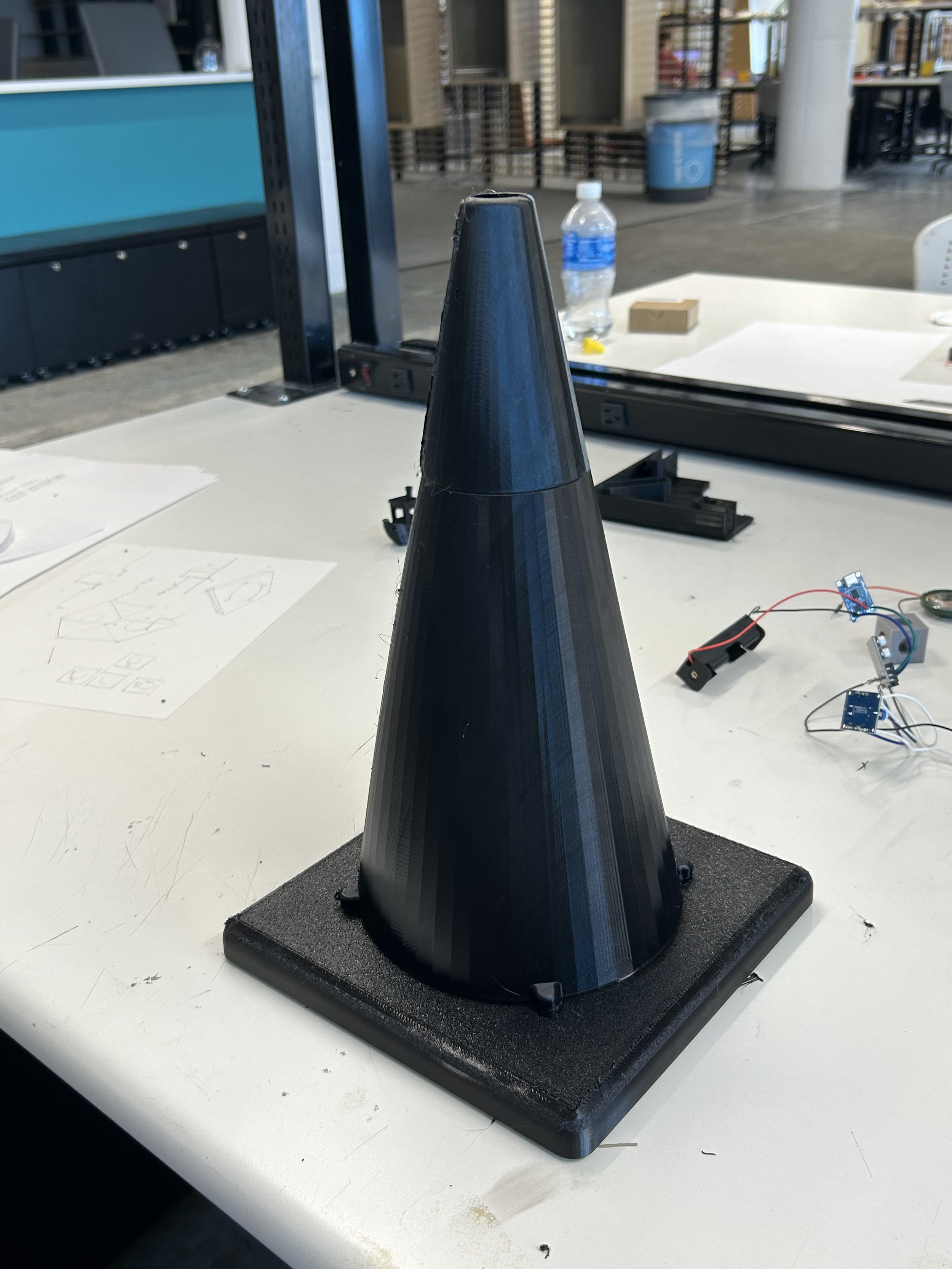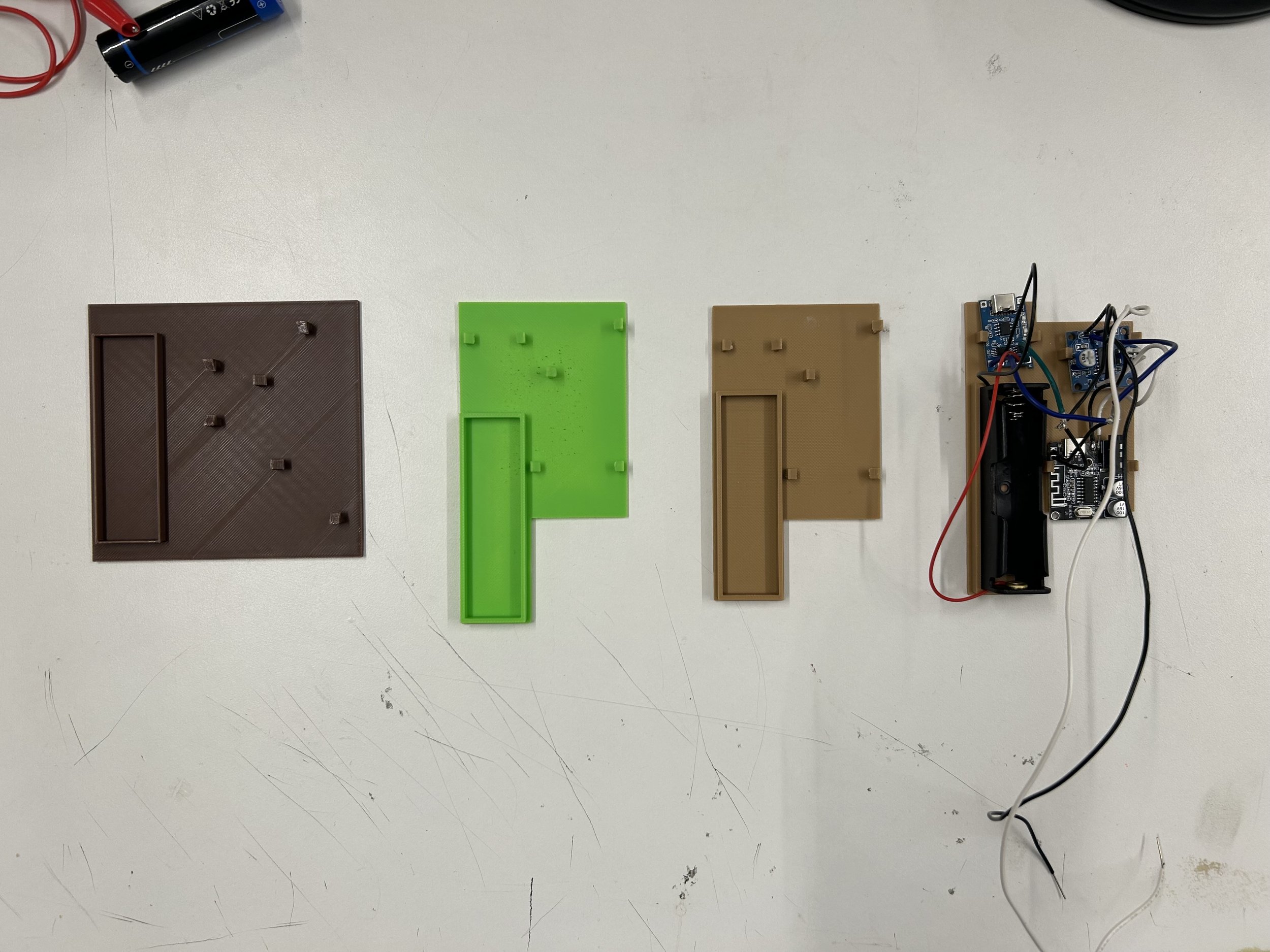Design Goals
Having a personal interest in speakers and audio experiences, I knew immediately that I wanted to design my speaker to sound legitimately good. I didn’t see the use in making a speaker that I wouldn’t want to use
Most high quality speakers on the market are tried and true simple geometric forms. I wanted to deviate from this and create a visually interesting form
At the crux of everything I do, I strive for originality. I want to be able to say that I designed this speaker and exercised my interests
Research
The audiophile world is full of subjective judgements on what boosts sound quality and what detracts from it. I decided to focus on a couple of objective truths from my research for my design.
No parallel faces inside the enclosure. Parallel interior surfaces bounce sound back and forth repeatedly behind the speaker driver. Adding in diffusing foam helps combat this issue further.
A baffle is necessary. Having a flat surface around the exterior of the driver provides an intentional flat surface for sound to bounce off of towards the listener.
For simplicity, I decided on using full-range drivers rather than a combination of drivers, tweeters, and subwoofers.
IDEATION
Change of Direction
During our concept critique, I wasn’t satisfied with my concepts and was actively thinking about how I could design a visually interesting, “baffled”, speaker.
Classmates were presenting somewhat novelty speaker concepts, speakers that mimicked everyday objects. I thought in that sphere for a while and realized that a traffic cone, laying on its side, has a natural cutout for a speaker as well as a surrounding square baffle.
First prototype
The cone was separated into three components: base, body, and tip
The goal was to secure the speaker driver between the plate and body, with the internal electrical components secured in a compartment between shelves in the body and tip. The tip would secure itself to the body with a slot-and-twist mechanism.
The opening at the top of the cone (tip) allows an entry for a USB-C charging cable

Problems
4 key problems realized after the prototype
The slot-and-twist joint is weak, and when laid on its side, the weight of the cone will fall on that joint and snap it
There is not enough room for the electrical components between the two “shelves”
The system of pulling wires through a hole in each shelf does not work with how the components will be soldered. If the parts were soldered after being placed inside the speaker, it would make disassembly for repairs or changes very difficult.
The main body did not fit over the speaker because of asymmetry created by the speaker connection bracket. The cone was designed to be realistically proportional, and this slim design with protruding screw holes did not work.
Solutions
Join the tip to the main body with a thick screw thread
House all of the electrical components in a compartment below the screw thread, entirely in the main body. This will prevent the wires getting caught and damaged while attaching the tip
Make the cone body as wide as the screw holes, simplifying the form for realism but possibly appearing wider than a real traffic cone. This could be remedied by redesigning the base to make it
New Challenges
Wiring needed more security than just a tight space to avoid damage. Needed to design a mounting board
The screw mechanism had a very tight fit. I was able to sand them down instead of reprinting the whole part

Challenges With Finishing Touches
Sanding the base prior to painting was very difficult due to its geometry with many crevices. I could have made this easier on myself by designing it differently earlier.
Lack of spray painting experience led to several instances of errors and correction throughout the painting process.
The reflective adhesive strips for the cone were poor quality and arrived heavily creased. I purchased a larger sheet of reflective adhesive and came up with a pattern through trial and error.
The base became slightly warped under the pressure of the screws due to the material thickness of the base.
Outcome
The speaker functions perfectly, and produces sound at a quality level that I would use
People have approached the speaker thinking it is an actual traffic cone - realism was a success
The speaker is sturdy and no parts have experienced damage or failure
What I Would Change
Extend the USB-C charging port to be inside the tip of the cone to eliminate needing to remove and re-attach the tip to plug in the charging cable
Increase the battery power to get clearer and louder sound from the speaker
Adding diffusing foam on the inside of the speaker to prevent sound from leaking out
Get in some spray painting practice prior to painting the cone
Printing everything in a lighter filament color, preferably white or orange, to make painting less work
